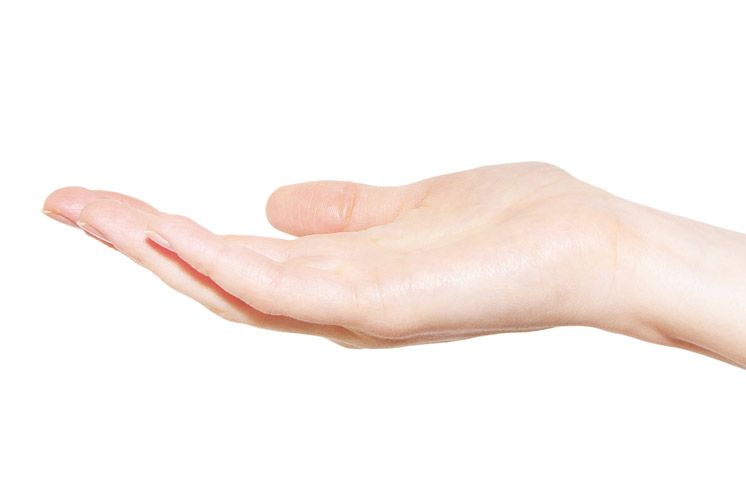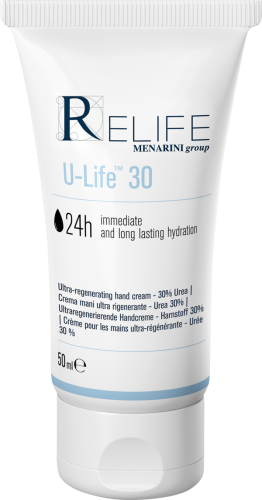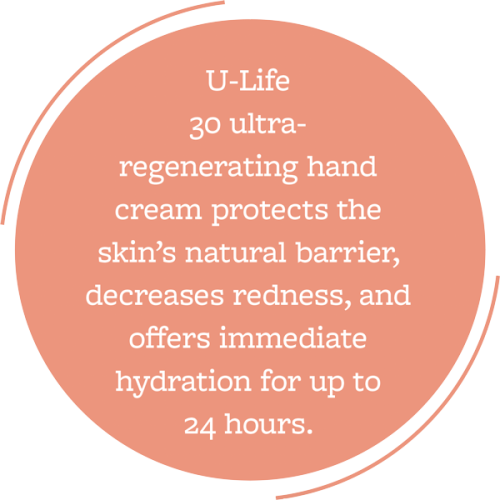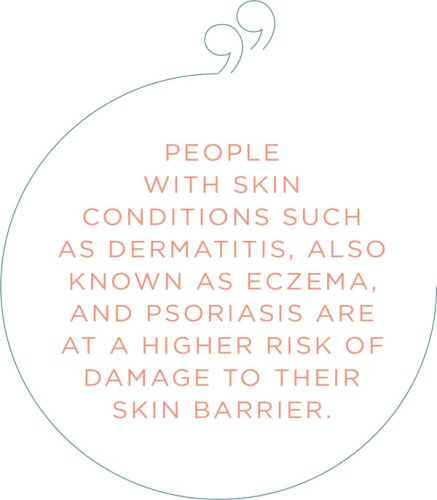Hands-on problem


The Covid-19 pandemic continues to have major impacts on so many aspects of our daily lives. We have grown accustomed to the constantly repeated advice to, ‘wash your hands, keep your distance, and wear a mask’. For many, regular and diligent hand washing has resulted in the development an unpleasant and disabling hand rash called contact dermatitis.
To understand why this is happening we need to look at the structure of the coronavirus. The virus is covered by a fatty, lipid layer. When, as instructed, we wash our hands with soap and water, or a hand sanitiser that contains at least 60% alcohol for at least 20 seconds, the lipid layer is penetrated and disrupted. The virus is inactivated, reducing the risk of viral transmission.
So how does this damage the skin of our hands? The outer layers of our skin form a barrier that prevents water loss and drying. An essential component of this barrier is a lipid layer. Just as washing with soap and water or a hand sanitiser disrupts the lipid layer on the coronavirus, so also can it disrupt the lipid layer of our skin barrier. You simply cannot get the desired effect without damaging the skin.
For many, this will not result in any problem as their skin barrier is up to the damaging effects of regular hand washing. For many others though, it can result in hand dermatitis: dry, scaly, itchy, and cracking skin. People with skin conditions such as dermatitis, also known as eczema, and psoriasis are at a higher risk of damage to their skin barrier and should use a moisturiser or an emollient instead of soap when washing their hands. Occasionally, the damage to the skin barrier allows the entry of bacteria that triggers skin infection. The hands may become quite sore with oozing and crusting on the skin surface.
What can we do to help prevent this happening?
It appears that washing with soap and water is slightly less damaging to the skin than using a hand sanitiser. The hands should be washed thoroughly for at least twenty seconds before being rinsed off under a running tap. If soap or sanitiser are left on the skin, they will continue to cause damage to the skin barrier. Twenty seconds is sufficient time to inactivate the coronavirus. Once the hands have been rinsed, they should be gently dried. Following drying, a moisturiser should be applied. The moisturiser should be reasonably greasy. The best moisturiser is the one a person finds acceptable and will use. In the past, aqueous cream was very widely used. However, it has been shown that the high concentration of sodium lauryl sulfate contained in this cream can irritate the skin of many people so it is best avoided. Emollients can be applied, as often as is necessary, between hand washes to keep the hands soft.
When we wash and dry our hands, we tend to neglect the webs at the base of our fingers, and particular attention needs to be paid to ensure that soap or hand sanitiser are fully cleared from these areas. The same problem can arise if soap or hand sanitiser collect under rings. If this practice is started before skin problems develop, dermatitis may be prevented.

How can I treat my dermatitis?
Dermatitis means inflammation of the skin. To treat it, the best anti-inflammatory treatment choice is a topical corticosteroid ointment. This usually only needs to be applied once daily. Many fear the risk of thinning the skin when using a topical corticosteroid ointment but they can be safely used and well tolerated when the appropriate potency is matched to an appropriate area of the skin. The hands have skin that is thick and tough. A potent topical corticosteroid ointment, applied once daily, is effective to use here. The skin in hand dermatitis is very dry and ointment formulations are favoured over creams. They penetrate the skin better than creams and have an emollient effect. Creams tend to be drying, but they may be suitable if the dermatitis is wet or oozing. Weak potency topical corticosteroids, such as hydrocortisone, are just not effective on the thick skin of the hands.
Activities that involve repeated exposure to irritants will exacerbate hand dermatitis. Common irritants include soap, shampoo, washing-up liquid, polish, dust and water so gloves should be worn when exposed to any of these. Wearing plastic or rubber gloves will cause the hands to sweat which is a strong irritant. To counteract this, it is advisable to have several pairs of cotton gloves to be worn under the plastic or rubber gloves. These may need to be changed regularly to ensure sweat is not allowed to collect excessively. Once washed and rinsed, the cotton gloves can be reused over and over again.
Covid-19 is going to be part of our lives for many years to come and we will need to accommodate the advice to, ‘wash your hands, keep your distance, and wear a mask’.
